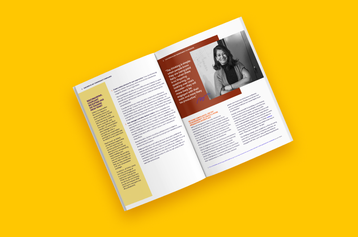FAQ: Can I Use PTO After Giving Two Weeks’ Notice, and What Is a PTO Payout?

Table of contents
- 1.Here's what you need to know about FAQ: Can I Use PTO After Giving Two Weeks' Notice?:
- 2.By Law, If an Employee Gives Two Weeks’ Notice, Can They Take Their Remaining PTO During That Time?
- 3.Final Pay: Cashing Out PTO
- 4.Payment for Unused Sick Time: Required?
- 5.Determining Policy: Your Best Approach
- 6.So, Can You Take PTO After Giving Notice? What Should Employees Take Into Consideration?
Here's what you need to know about FAQ: Can I Use PTO After Giving Two Weeks' Notice?:
- Employees may submit paid time off (PTO) requests after they've given two weeks' notice, but employers can legally deny those requests.
- You're entitled to a PTO payout (in conjunction with your final paycheck) if you're among the 24 states stipulating this in their labor laws.
- To ensure you adhere to current standards, the HR team should advise you regarding the Fair Labor Standards Act (FLSA) and relevant state or local labor laws since they regulate minimum wage and overtime pay.
If an employee gives two weeks’ notice, are they entitled to take their remaining PTO during that time? The short answer is yes. Moreover, employees giving two weeks’ notice and taking vacation with PTO scheduled during two-week notice may sound ideal. However, several elements must be considered from both the employer’s and the employee’s perspectives. Other options, including a PTO payout, may exist and should also be considered. This article provides a fuller picture of best practices surrounding requesting or using PTO during two weeks’ notice.
By Law, If an Employee Gives Two Weeks’ Notice, Can They Take Their Remaining PTO During That Time?
Employees may submit paid time off (PTO) requests after they’ve given two weeks’ notice, but employers can legally deny those requests. Why? Pairing PTO with the last two weeks of employment makes it much more difficult for employers to find a suitable replacement.
There’s a world of difference between taking a day or two of PTO during your two weeks’ notice and taking PTO for the entirety of your two weeks’ notice. Employees can take the PTO as additional vacation time, or they might even start a job at their new employer immediately. But that defeats the entire point of the two weeks’ notice.
THERE’S A WORLD OF DIFFERENCE BETWEEN TAKING A DAY OR TWO OF PTO DURING YOUR TWO WEEKS’ NOTICE AND TAKING PTO FOR THE ENTIRETY OF YOUR TWO WEEKS’ NOTICE.
Employees also need to consider the projects they have been handling for the company. It’s always a good idea to leave on good terms. If the departing employee helps with the transition period, they will likely depart on good terms.
Are you looking to choose the right PTO policy for your business?
Final Pay: Cashing Out PTO
Depending upon the state labor laws that apply to the employment relationship, employees may be entitled to a PTO payout in conjunction with their final paycheck. Check the state(s) that govern your company’s practices to determine if yours requires employers to pay out PTO at the end of employment. If it’s part of the company policy, the employee can either cash in on their unused PTO or use it during the two weeks’ notice period. Legally speaking, the employee can use eight days of their vacation time for PTO even after they hand in the resignation letter.
Still, the company policy might discourage employees from taking PTO during two weeks’ notice period and encourage them instead to opt out for a cash payment for their accrued but unused vacation days.
Payment for Unused Sick Time: Required?
Employers decide whether or not to pay employees for unused sick time. It must be a consistently applied company-wide standard. For employers, there are benefits to each option:
- Paying out sick time encourages employees to be conscientious of how they use sick days during employment. If an employee knows that sick time used means money lost, they’re likely to be more conscientious in deciding how frequently they call in sick.
- Not paying out sick time protects employers from more significant financial losses after an employee leaves.
There are different ways companies approach sick time, but the overall goal should ensure workplace fairness among employees. Many companies address the sick time dilemma by solely offering PTO. To avoid larger payouts, employers can create a tiered structure. For example, the longer an employee has been with a company, the faster they accrue PTO.
Determining Policy: Your Best Approach
The long-term effect of how you treat an employee who has given notice doesn’t end when that person clocks out for the last time. People talk, and it’s crucial that what they say about you and your employee policies accurately reflects your business. IT’S IN YOUR BEST INTEREST TO PROVIDE THE BEST POSSIBLE EXPERIENCE TO YOUR EMPLOYEES, EVEN THE ONES THAT ARE DEPARTING.
People will talk about the standards and procedures in the company, and it’s in your best interest to provide the best possible experience to your employees, even those who are departing. You might collaborate again with the employee in the future, and they will share their experiences with others. This could include everything from overtime pay and unpaid/paid wages to labor standards and the human resources department’s approach toward them.
So, setting a good precedent for existing employees should be a top priority. Choose a single approach for your departing employees and stick to it, ensuring it’s fair for all employees. That means figuring out what to do with sick days and unused vacation time and how long the advance notice should be. You must ensure you don’t break employment or labor laws during this process. To ensure you adhere to current standards, the HR team should advise you regarding the Fair Labor Standards Act (FLSA) and relevant state or local labor laws that regulate minimum wage and overtime pay.
So, Can You Take PTO After Giving Notice? What Should Employees Take Into Consideration?
Typically, yes, you can take it in one way or another. But can you use PTO during two-week notice, and for that matter, should you, is a different question.
Employees should have the following three elements in mind when handing in their two weeks’ notice:
- Help throughout those two weeks. The first thing the employee needs to do is to help the company during the two weeks’ notice. The company will have to hire someone new for the person’s job, and the departing employee should help with the transition. The leaving employee knows their job the best, and their help in the transitional period is extremely valuable.
- Be available. Departing employees are either on a job search or already have something lined up after completing their two-week notice. But during the interim period, they should be available to the employer even if they take some PTO. The new employee will need guidance, and the departing employee should help them get accustomed to the job.
- Finish on good terms. The last thing for the employee is to leave the company on good terms. Not only is it possible they will work for the same company sometime in the future, but companies also talk to one another. Employees who leave on good terms might also get a good reference for the next job.
Can you take PTO after giving notice? Yes, the employee can do that. But they will need to communicate with their employers to ensure as smooth a transition as possible.
Companies should also establish a fair final pay policy for all employees. When deciding whether or not to pay employees for accrued PTO, consider the individual, the company as a whole and the regulations.

TriNet Team
Table of contents
- 1.Here's what you need to know about FAQ: Can I Use PTO After Giving Two Weeks' Notice?:
- 2.By Law, If an Employee Gives Two Weeks’ Notice, Can They Take Their Remaining PTO During That Time?
- 3.Final Pay: Cashing Out PTO
- 4.Payment for Unused Sick Time: Required?
- 5.Determining Policy: Your Best Approach
- 6.So, Can You Take PTO After Giving Notice? What Should Employees Take Into Consideration?






